podiatrist issaquah
Displaying items by tag: podiatrist issaquah
Dr Brandon Nelson, A Double Board-Certified Physician & Surgeon, Discusses Patients Decide to Have Bunion Surgery

Bunions form on the big toe and are caused by a rotational malalignment of the 1st metatarsal. They are usually inherited and can get bigger with time. Many people will begin to find it difficult to wear shoes, exercise and walking will become painful. I will discuss why many people decide to have bunion surgery below.
Reduction of Pain/Discomfort
This is the most common reason patients seek to have bunion surgery. Many experience pain with walking every day. This can make even going to the store challenging. The bunion gets bigger with time and creates more inflammation in the foot. The surgery aims to realign the foot and reduce bunion pain.
Preventing Further Progression
Many know this well, but your bunion grows and the bone shifts farther out of place. This can lead to other issues like hammer toes, flatfeet, and arthritis. The goal of surgery is to stop the bunion from increasing in size and prevent the bunion from preventing more severe foot complications.
Improving Foot Function
Bunions cause significant foot impairments and function. This makes things like running and exercise difficult. Surgery not only helps fix the appearance of the foot but the overall function. The goal is to restore anatomical alignment and help the foot function in a more natural state.
Newer Techniques
It is important to know that bunion surgery is not a one size fits all. It should be customized to your foot structure. Newer techniques are available that decrease healing times and allow early ambulation.
Bunion surgery should not be taken lightly. You should seek a skilled bunion surgeon and have questions ready to ask your surgeon. If you would like a consultation for your bunion I can help. Call to make an appointment with me at 425-391-8666 or make an appointment online.
Sincerely,
American College of Foot & Ankle Surgeons
Issaquah’s Top Podiatrist & Bunion Surgeon
Dr. Timothy Young, a Board-Certified Foot Surgeon Discusses: Potential Risks Associated With Bunion Surgery.
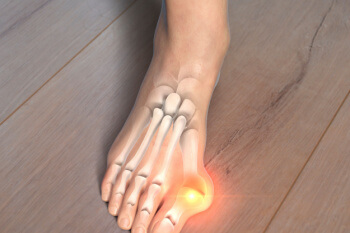 Understanding the Potential Risks of Bunion Surgery
Understanding the Potential Risks of Bunion Surgery
Bunion surgery, also known as bunionectomy or hallux valgus correction, is a common procedure used to correct deformities of the big toe joint. While this surgery can provide significant relief for individuals suffering from bunion-related pain and discomfort, like any surgical procedure, it carries certain risks. Understanding these potential risks is essential for individuals considering bunion surgery.
1. Infection
One of the primary risks associated with any surgery is the possibility of infection. Although steps are taken to minimize the risk, such as sterile operating environments and antibiotics, infections can still occur. Symptoms of infection may include redness, swelling, warmth, and discharge at the surgical site. Prompt medical attention is necessary if infection is suspected. Note that we recommend patients scrub the foot with chlorhexidine the night before surgery and the morning of surgery. Prophylactic antibiotics are often given during the surgery via intravenous route to help reduce the risk. Leaving the initial dressing intact and making certain that it does not get wet are also very important.
2. Nerve Damage
During bunion surgery, there is a risk of nerve damage, particularly to the nerves surrounding the big toe joint. This can result in numbness, tingling, or altered sensation in the toes or foot. In most cases, nerve damage is temporary and resolves over time, but in rare instances, it may be permanent. With the Lapidus or Lapiplasty surgery the dorsal medial cutaneous nerve of the foot is often encountered. It is not always possible to retract the nerve and therefore this nerve may have reduced function or sensitivity after surgery.
Some individuals may experience delayed healing after bunion surgery. Factors such as age, overall health, and the extent of the surgical procedure can affect healing time. Delayed healing may result in prolonged pain, swelling, and limited mobility in the foot. Delayed healing can relate to the incision itself, the subcutaneous layers and capsule – soft tissue, and finally bone. Anyone of these layers can be affected by delayed healing. In general the most critical is bone healing because once the bone healing is adequate and stable then protected and/or limited weight-bearing is not necessary.
4. Recurrence
While bunion surgery aims to correct the misalignment of the big toe joint, there is a risk of recurrence. Factors such as genetics, foot structure, improper footwear, and post-operative care can contribute to the recurrence of bunions over time. Additional surgical interventions may be necessary if a bunion returns after initial correction. The more severe the bunion, and the younger the patient is at the onset of the bunion (juvenile bunion) may also make the patient more prone to reoccurrence. Therefore it is critical to make sure that your surgeon that is the most correct the procedure possible in these cases.
5. Stiffness and Reduced Range of Motion
After bunion surgery, some individuals may experience stiffness and reduced range of motion in the affected toe or foot. Physical therapy and exercises may be recommended to improve flexibility and mobility. In severe cases, stiffness may persist despite rehabilitation efforts. The more work that is done directly involving the great toe joint and the first metatarsal phalangeal joint (first MTP joint) and its capsule, the more tendency there will be to have stiffness of the great toe joint here. In some cases such as with the Lapidus or Lapiplasty procedure it is possible to have excellent correction with minimal surgical involvement or dissection of the first MTP joint capsule. These patients seem to have better flexibility postoperatively.
6. Blood Clots
There is a risk of developing blood clots (deep vein thrombosis/DVT) after any surgical procedure, including bunion surgery. Blood clots can be dangerous if they travel to the lungs (pulmonary embolism). To reduce the risk of blood clots, patients may be advised to move their legs regularly after surgery and wear compression stockings. In addition there are a number of other factors that can make patients prone to a DVT. Some examples are estrogen medications and/or supplements, genetic history of bleeding disorders, smoking, the use of the tourniquet during surgery are all examples of risk factors.
7. Allergic Reactions
Rarely, individuals may experience allergic reactions to medications, anesthesia, or materials used during bunion surgery. It is essential to inform your healthcare provider of any known allergies before the procedure to minimize this risk.
8. Unsatisfactory Results
Despite the best efforts of the surgeon, some individuals may be dissatisfied with the results of bunion surgery. This can occur if the desired correction is not achieved, or if complications arise during the healing process. Revision surgery may be considered in such cases.
Reducing Risks and Ensuring Successful Outcomes
While the risks associated with bunion surgery cannot be entirely eliminated, there are steps individuals can take to reduce these risks and improve the likelihood of a successful outcome:
Choose a Qualified Surgeon: Select a board-certified surgeon with experience in bunion surgery.
Follow Preoperative Instructions: Adhere to preoperative instructions provided by your surgeon, such as avoiding certain medications and fasting before surgery.
Understand the Procedure: Take the time to understand the bunion surgery procedure, including potential risks and expected outcomes.
Follow Postoperative Care Guidelines: Follow your surgeon's postoperative care instructions, including medication management, wound care, and rehabilitation exercises. Make sure you get clear postoperative instructions and really plan out your postop help and routine. For example how will you get around and who will help with food. First 48 hours postoperatively, it is critical to have somebody immediately available.
Attend Follow-Up Appointments: Attend scheduled follow-up appointments with your surgeon to monitor healing progress and address any concerns promptly.
By being informed about the potential risks of bunion surgery and taking proactive measures, individuals can help minimize complications and achieve a successful outcome from their surgical procedure. Consulting with a qualified healthcare professional is crucial for personalized advice and guidance regarding bunion surgery and its associated risks.
If you have any questions or would like a consultation please call 425-391-8666 and make an appointment online.
Dr. Timothy Young
Foot & Ankle Surgeon
Issaquah's Top Podiatrist
Dr. Brandon Nelson, A Double Board Certified Foot Physician & Surgeon, Issaquah’s Top Podiatrist, Discusses Bunion Surgery
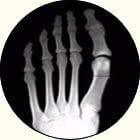
Bunions can be quite painful and become a hindrance to everyday life. While there are some conservative measures that may provide some temporary relief the only long term solution is surgery.
First it is important to understand what a bunion is. A bunion is when the 1st metatarsal shifts out of place. This shifting gets worse with time and the bunion gets bigger. The visual result is the big toe starts to overlap the 2nd toe and the protuberance you see at the base of the big toe is the 1st metatarsal. To fix the bunion the 1st metatarsal needs to be realigned.
The realignment of the 1st metatarsal can happen in two ways. The first being you cut the bone and reposition it anatomically. This is probably the most common bunionectomy performed in the United States. It usually involves about 4-6 weeks in a walking boot and has great outcomes for smaller bunions. The next most common would be a fusion of the tarsometatarsal joint. This is a procedure that is for larger bunions or people with unstable foot structures. This surgery usually requires a period of non-weight bearing for 3-6 weeks. Both of these procedures can have great outcomes when utilized appropriately.
How do you know which bunion surgery is best for your foot? There are many factors to take into account. The overall foot structure, any other foot pathologies, lifestyle, recovery and age. I recommend seeing a foot and ankle doctor that operates on a lot of bunions.
If you have a bunion and would like a consultation I can help. Please call 425-391-8666 or make an appointment online with Dr. Nelson.
Sincerely,
Board Certified Physician & Surgeon
Issaquah’s Top Podiatrist & Foot/Ankle Surgeon
Dr. Timothy Young, a Board-Certified Foot Surgeon discusses: Understanding Why Bunions Can Reoccur.
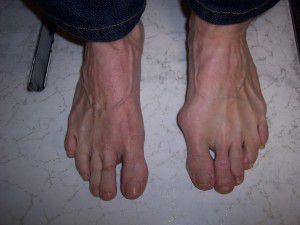
Bunions are a common foot condition that can cause pain, discomfort, and difficulty with footwear. They typically develop when the joint at the base of the big toe becomes misaligned, leading to a bony bump on the side of the foot. Although surgical correction can provide relief for many individuals, some individuals may find that their bunions come back or reoccur over time. Understanding the factors that contribute to bunion recurrence can help individuals take steps to prevent this from happening.
1. Genetics and Foot Structure
One of the primary reasons bunions can reoccur is because of genetics and foot structure. Some individuals are predisposed to developing bunions because of inherited foot shapes or structural conditions. Even after surgical correction, the underlying foot structure is still there and may still contribute to the gradual return of the bunion over time. A perfect example this is a juvenile onset bunion. We see patients who are teenagers who already have quite pronounced bunions. In this case they certainly inherited foot structure that makes them highly prone to this. This is commonly due to an underlying foot structure called metatarsus adductus. Pronation is another foot structure that is prone to bunions. The combination can be especially challenging, a pronated foot with metatarsus adductus.
2. Improper Footwear
Wearing tight, pointed, or high-heeled shoes can exacerbate bunion formation and contribute to their recurrence. These types of footwear by raising the heel cause extra pressure on the entire forefoot and place excessive pressure on the toes and can force the big toe joint out of alignment. Even after surgery, if individuals continue wearing these type of shoes, it can increase the likelihood of bunions coming back.
3. Post-Surgical Care
Proper post-surgical care is critical for preventing bunion recurrence. Following your surgeon's instructions regarding activity levels, wearing orthotic devices or splints, and attending follow-up appointments is essential. Failure to adhere to post-operative care guidelines can increase the risk of the bunion returning.
4. Joint Instability
In some cases, joint instability can contribute to bunion recurrence. This may occur if the surgical correction did not adequately address underlying joint laxity or if there are other issues with the foot structure and foot biomechanics. Physical therapy and exercises to strengthen the foot and improve stability can be beneficial in these situations. Note that in example this would be a round first metatarsal head with laxity of the underlying capsule and ligaments.
5. Lifestyle Factors
Certain lifestyle factors, such as obesity or activities that place repetitive stress on the feet, can also contribute to bunion recurrence. Excess weight can put additional strain on the feet and exacerbate bunion formation. Similarly, activities that involve repeated bending or pressure on the toes can lead to joint misalignment over time.
6.
Surgical factors: when I see patients who come in for a 2nd opinion and have had surgery previously and there has been recurrence, I look to see how much correction was done initially. Sometimes there is a lack of adequate correction from the beginning and this creates a higher risk of recurrence. It is important to fully correct the bunion whenever possible. For example a juvenile onset bunion needs the most corrective surgery possible because they are so prone to reoccurrence. This often means a Lapiplasty or similar procedure. Another example would be a lack of adequate release of the soft tissue at the great toe joint. It is very important that after surgery the great toe joint lines up correctly and the big toe doesn't want to pull to the side toward the 2nd toe. If the soft tissue capsule is not adequately released this can be a problem.
Preventing Bunion Recurrence
While some factors contributing to bunion recurrence are beyond individual control, there are steps individuals can take to reduce the risk:
Choose Proper Footwear: Opt for shoes with a wide toe box, low heels, and adequate arch support to reduce pressure on the toes. Hold off on the really dressy shoes except for special occasion like a wedding or a special dinner out. And even then avoid a really high heel shoe.
Maintain a Healthy Weight: Maintaining a healthy weight can alleviate strain on the feet and joints.
Follow Post-Surgical Care Guidelines: Adhere to your surgeon's recommendations for post-operative care, including wearing orthotics and attending follow-up appointments.
Monitor Foot Health: Regularly check your feet for any signs of bunion recurrence or other foot issues, and seek medical attention if necessary.
Consider Conservative Treatments: In some cases, conservative treatments such as orthotics, padding, and physical therapy may help prevent bunion recurrence or delay its progression.
For those very high-risk patients using a "retainer" similar to a dental retainer can be used to help maintain the alignment of the great toe and keep it from drifting toward the 2nd toe or at least really slow its progression.
Make sure to discuss this concern if you are in for a surgical consultation. If you would like a 2nd opinion or have additional questions and would like consultation at our clinic, I would be happy to provide this consultation.
By understanding the factors that contribute to bunion recurrence and taking proactive measures, individuals can help reduce the likelihood of experiencing this common foot problem again in the future.
If you have any questions or would like a consultation please call 425-391-8666 and make an appointment online.
Dr. Timothy Young
Foot & Ankle Surgeon
Issaquah's Top Podiatrist
Dr. Brandon Nelson, A Double Board Certified Foot Physician & Surgeon, Issaquah’s Top Podiatrist, Discusses Your Bunion
Bunions are often looked at as just a cosmetic concern however this is not true. They can cause pain and discomfort and lead to more foot problems in the future. Today I will discuss bunions, what they are, their cause, symptoms and what we can do to treat them.
What is a bunion?
A bunion is a bony protrusion of the 1st metatarsal. It occurs as the 1st metatarsal shifts out of place and the big toe begins to drift towards the second. This begins as a small misalignment of the joint and grows larger and more malaligned as time and mileage increase.
Causes of bunions:
There are many causes of bunions and from long term research we know the following are the most common.
-Genetics plays a large role in the development of a bunion. You inherit your foot structure and this can predispose you to a bunion.
-Another source cited is footwear. Anything that puts more forefoot pressure like a high heeled shoe can accelerate bunion formation.
-Systemic causes can be attributed to bunions. Conditions like Rheumatoid arthritis or other arthropathies that attack joints.
Symptoms:
These are what usually bring patients into the office. These are things like having a hard time fitting shoes, rubbing the big toe on the 2nd toe. Another common symptom is pain or swelling and redness of the big toe joint.
Treatment:
I usually break the treatment up to conservative and surgical. The conservative measures include, no bare feet and wearing a wider shoe. Save your money no splints or stretching devices of the big toe work. Remember this is a bony malalignment and you can not move bones from the outside of your foot. Surgery is the only long term fix. The surgical correction depends on the size, age and overall foot structure.
If you have a bunion and would like a consultation I can help. Please call 425-391-8666 or make an appointment online, and ask for an appointment with Dr Nelson.
Sincerely,
Double Board Certified Physician & Surgeon
Issaquah’s Top Podiatrist & Foot/Ankle Surgeon
Dr Brandon Nelson, A Double Board-Certified Physician & Surgeon, Discusses Painful Hammertoes
Hammertoes are a common pathology I see in my office. Most patients with curled toes have pain with activities and a hard time fitting shoes. They describe a progression of the toes where other forefoot pathologies can be present.
The most common cause appears to be foot structure and genetics. We see patients that have flatter feet require increased pressure from the tendons in their toes to stabilize. This repetitive pressure can cause pain and discomfort. Some people will inherit a foot structure that can predispose them to hammer toes. These foot structures are ones that often develop bunions as well.
Symptoms:
The symptoms can vary from patient to patient. The most common symptoms include swelling and pain. Some patients relate a significant stiffness or bending to the toes that pushes in their shoes. All can be painful, especially with physical activities.
Treatment:
We have many options available for hammer toes. But it should be noted it is based on the degree of the hammer toe. How significant is the bending and contracture of the digit. It is important to have a good clinical evaluation and an x-ray. If you would like a consultation for your hammer toe pain I can help. Call to make an appointment with me at 425-391-8666 or make an online appointment.
Sincerely,
American College of Foot & Ankle Surgeons
Issaquah’s Top Podiatrist
Dr. Timothy Young discusses the Adductoplasty Procedure for Midfoot Arthritis: A Comprehensive Guide
What is Adductoplasty? Adductoplasty is a surgical procedure designed to treat midfoot arthritis by realigning the bones in the midfoot region. It specifically targets the midfoot joints, such as the 2nd and 3rd metatarsal cuneiform joints (also known as the tarsometatarsal joints or TMT joints), which are commonly affected by arthritis. The goal of the adductoplasty procedure is to correct deformities, alleviate pain, and improve joint function and address arthritis joint pain.
Who Can Benefit from Adductoplasty? Adductoplasty is typically recommended for individuals with moderate to severe midfoot arthritis that hasn't responded adequately to conservative treatments. Common symptoms that may indicate the need for adductoplasty include persistent pain, stiffness, swelling, and difficulty walking or bearing weight on the affected foot.
The Procedure:
- Preoperative Assessment: Before undergoing adductoplasty, patients undergo a thorough preoperative assessment, including imaging studies like X-rays or MRI scans to evaluate the extent of arthritis and deformity.
- Anesthesia: Adductoplasty is performed under general anesthesia or IV sedation type anesthesia, depending on the patient's health and surgical preferences.
- Incision and Access: The surgeon makes an incision on the affected foot to access the midfoot joints. Minimally invasive techniques may be used to minimize tissue damage and promote faster recovery.
- Bone Realignment: Using specialized instruments, the surgeon realigns the bones in the midfoot to correct deformities and restore proper joint alignment. This will involve removing damaged cartilage or bone spurs.
- Stabilization: Additional procedures like joint fusion are necessary to stabilize the joint and promote healing.
- Closure and Recovery: Once the procedure is completed, the incision is closed, and the foot is bandaged. Patients are monitored in the recovery room before being transferred to a hospital room or discharged home, depending on the surgical plan.
Recovery and Rehabilitation: The recovery timeline for adductoplasty varies depending on the individual and the extent of the procedure. However, here are general guidelines:
- Postoperative Care: Patients are advised to keep the foot elevated and apply ice to reduce swelling and discomfort.
- Weight-Bearing: The surgeon will provide instructions on when and how much weight can be placed on the foot. Crutches or a walking boot may be recommended initially.
- Physical Therapy: Rehabilitation typically involves physical therapy to improve strength, flexibility, and mobility. Patients learn exercises to restore function and prevent stiffness.
- Follow-Up Visits: Regular follow-up visits with the surgeon are essential to monitor healing, address any concerns, and adjust the rehabilitation plan as needed.
Benefits of Adductoplasty:
- Pain Relief: Adductoplasty can significantly reduce pain and discomfort associated with midfoot arthritis, allowing patients to engage in daily activities more comfortably.
- Improved Function: By correcting deformities and realigning the bones, adductoplasty improves joint function, enhancing overall quality of life.
- Long-Term Results: Many patients experience long-lasting benefits from adductoplasty, especially when combined with postoperative rehabilitation and lifestyle modifications.
Conclusion: Adductoplasty is a valuable surgical option for individuals suffering from midfoot arthritis, offering pain relief, improved joint function, and enhanced quality of life. If you're considering adductoplasty or exploring treatment options for midfoot arthritis, consult with a qualified orthopedic surgeon to determine the best course of action based on your specific needs and goals. With proper care, rehabilitation, and follow-up, adductoplasty can pave the way for a more active and pain-free lifestyle.
If you have any questions or would like a consultation please call 425-391-8666 and make an appointment online.
Dr. Timothy Young
Foot & Ankle Surgeon
Issaquah's Top Podiatrist
Dr Brandon Nelson, A Double Board-Certified Physician & Surgeon, Discusses Stubborn Heel Pain
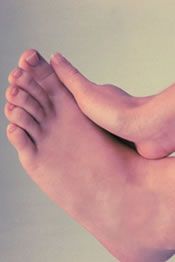
I have to say that exercise for me helps with my mental health and overall wellbeing. I typically workout 6/7 days a week and enjoy running, biking, rucking and walking the dog. It is a great stress relief and helps me clear my head after a day of work. I am sure many of you can relate and as the weather clears more of us are getting back into an exercise routine.
That being said, I always see a spike in heel pain patients this time of year. It makes sense with the weather drying up and everyone wanted to get outside and ready for summer. Heel pain can really sideline you as you return to activities. It can come on suddenly and stick around for months. As a side note, the earlier you get treatment the faster you can recover. It is usually caused by inflammation of your plantar fascia.
The plantar fascia is the main support network of the foot. It is a soft tissue structure that runs from your heel to your toes. It has the function of controlling the foot and helping with propulsion. It can get worn out with time or tired from increased loads. It is by far the most common condition I treat.
Some patients wait quite a while before coming in and these cases are often what I call “stubborn heel pain” or “chronic fasiitis”. This is because the inflammation has now become chronic, and the body has given up on trying to fix it and now coexists with this pathology. These cases are harder to treat and usually require more extensive care. I think it is important to understand that once it becomes chronic, part of the treatment usually requires a reactivation of the body’s ability to recognize this condition. You must take the chronic state of inflammation and turn it back to an acute state.
I really enjoy helping my patients get their life back and their feet pain free. If you would like a consultation for your heel pain I can help. Call to make an appointment with me at 425-391-8666 or make an appointment online.
Sincerely,
American College of Foot & Ankle Surgeons
Issaquah’s Top Podiatrist
Dr. Brandon Nelson, A Board Certified Foot Physician & Surgeon, Issaquah’s Top Podiatrist, Discusses Why You Should Have Your Bunion Fixed
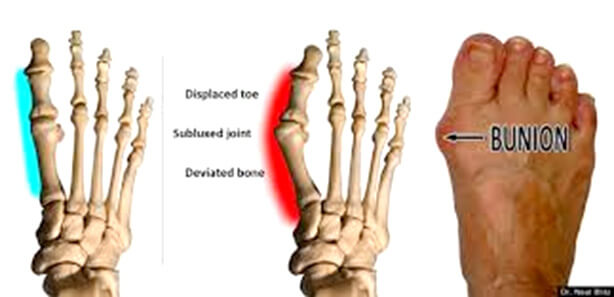
Bunions are one of the most common reasons people schedule an appointment with a foot and ankle surgeon. It is by far the most common surgical procedure I do. People of all ages and activity levels can have a bunion. The primary reason people schedule an appointment is difficulty fitting the shoes they would like to wear.
I think there are quite a few reasons to fix your bunions these days and I will discuss a few of the most beneficial reasons.
Bunions are an inherited foot disorder and are more common in women. They are usually the result of a foot that wants to flatten out too much or what we would call pronate. A bunion results when the first metatarsal tries to stabilize the medial arch. This results in the first metatarsal moving out of place and the bunion developing. Fixing a bunion can result in stabilization of the medial arch. This can have effects on the overall stability of the foot. I see patients that have had plantar fasciitis or other stability issues that resolve once the bunion is fixed.
2. Shoe Fit
Another big issue with bunions becomes an inability to fit in normal shoes. I see a lot of wide shoes and short extra depth shoes when people try to accommodate bunions and other toe deformities. It is often a relief to be able to have shoes fit again and get back to wearing the shoes you once enjoyed or liked after your toe is straightened.
3. Your Bunion Will Get Larger
Many people believe they can use straps or tape or toe straighteners and change their bunion. However, we know from long term data this is not true. There is no way to reverse your bunion without surgery. Everyone’s bunion with time and mileage will get bigger. I recommend having it fixed before it causes the 2nd toe to become a hammer toe or begins to cross over or under the 2nd toe.
If you have a bunion and want an evaluation schedule an appointment with me, or make an appointment online, I will help you.
Sincerely,
Board Certified Physician & Surgeon
Issaquah’s Top Podiatrist & Foot/Ankle Surgeon
Dr. Timothy Young a board-certified foot surgeon discusses Chillblains: causes, symptoms, and treatment.
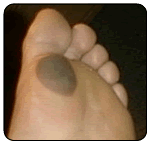
Introduction: As winter settles in, along with its frosty bite, many of us bundle up in layers of clothing to protect ourselves from the cold. Despite our efforts, some may still find themselves facing an uncomfortable and sometimes painful condition known as chillblains. Chillblains, also spelled chilblains, are a common affliction during colder months, yet they remain relatively misunderstood. Chilblains is the common term used for this and Pernio is the medical term for chilblains. Very similar conditions include Raynaulds phenomenon and acral cyanosis. In this blog post, we discussed the details of chillblains, exploring their causes, symptoms, and effective treatments.
What are Chillblains? Chillblains, medically termed pernio, are a localized reaction of the skin to cold temperatures. They occur when the skin is exposed to cold but not freezing temperatures and then undergoes rapid warming, causing blood vessels to expand and leak. This leakage leads to inflammation and injury to the surrounding tissues.
Causes of Chillblains: Chillblains typically develop in response to repeated exposure to cold, damp conditions. Individuals living in cold climates or those who spend prolonged periods outdoors during winter are at higher risk. Certain factors may predispose individuals to chillblains, including poor circulation, hormonal changes, and medical conditions such as Raynaud's disease.
Discussion: Vasospasm of the smaller blood vessels in the digits are common in this case pulses in the feet may be intact but despite this the blood flow to the digits is essentially cut off. With a lack of oxygen there can be tissue damage and resultant inflammation even after the blood flow is reestablished. It also can be common for the individual’s foot to be moist from perspiration such that a “damp chill” on the feet occurs. This is why one of the strategies is to keep the feet dry and wool socks do a great job with this. In addition in the toes if there is a place where the toes often rub together that seems to be a common location to get purple/cyanotic nodular enlargement and irritation from the contact between the toes. Patient will come into the clinic with these purple painful nodules on their toes and states that they been to other clinics and owns quite certain what it is. They commonly think that they started out as a blisters.
Symptoms of Chillblains: The symptoms of chillblains can vary in severity but commonly include:
- Redness or purplish discoloration of the skin
- Swelling and tenderness with nodular enlargement
- Itching or burning sensation
- Blistering or ulceration in severe cases, often these are purple or cyanotic.
- Pain or discomfort, particularly upon warming the affected area
Chillblains most commonly affect the extremities, such as the toes, fingers, ears, and nose, but can also appear on other parts of the body exposed to the cold.
Treatment and Management: While chillblains can be uncomfortable, they typically resolve on their own within a few weeks once the affected individual is no longer exposed to cold temperatures. It’s not uncommon for these to last often on through the winter and then totally resolved each summer. But as the years go by sometimes the become progressively more of a challenge or problem. However, several measures can help alleviate symptoms and promote healing:
- Keep the affected area warm but avoid sudden temperature changes.
- Gently massage the area to improve circulation.
- Apply soothing lotions or creams to relieve itching and discomfort.
- Avoid scratching or rubbing the affected skin to prevent further irritation.
- Protect the skin from further exposure to cold and moisture by wearing appropriate clothing and using gloves, socks, or earmuffs.
In more severe cases or if complications arise, medical intervention may be necessary. This may include prescription medications to reduce inflammation, promote healing, or manage underlying conditions contributing to poor circulation.
Prevention: Prevention is key to avoiding the discomfort of chillblains. Some tips to prevent chillblains include:
- Dress warmly in layers, paying particular attention to extremities.
- Keep indoor environments warm and dry, especially during colder months.
- Limit exposure to cold and damp conditions, and take breaks to warm up if spending extended periods outdoors.
- Wear moisture-wicking socks and breathable footwear to prevent moisture buildup.
- Maintain good circulation through regular exercise and avoiding tight-fitting clothing or accessories that may restrict blood flow.
Conclusion: Chillblains are a common but often misunderstood condition that can cause discomfort during colder months. By understanding the causes, symptoms, and effective treatment options, individuals can better manage and prevent chillblains, ensuring a more comfortable and enjoyable winter season. If symptoms persist or worsen, it's essential to seek medical advice for proper evaluation and treatment. Remember, staying warm and dry is key to keeping chillblains at bay.
If you have any questions or would like a consultation please call 425-391-8666 and make an appointment online.
Foot & Ankle Surgeon
Issaquah’s Top Podiatrist



